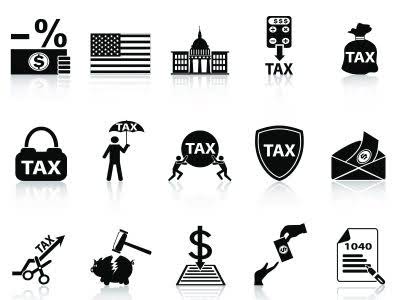Content

Purchase order encumbrances are most commonly used in government accounting, but any organization can use the principle for budgetary control. Using encumbrance entries can serve as a general planning tool and can predict cash outflow. Encumbrance Accounting Journal Entries are used to track the estimated liabilities and expenditures of a company in order to maintain accurate financial records. The entries record any commitments that have been made but not yet paid for, such as contractual obligations and purchase orders. By tracking these expenses, it helps ensure that the company does not exceed its budget and reduces the chances of fraud or errors. Encumbrance Accounting Journal Entries also make it easier for companies to adhere to legal regulations relating to financial reporting and auditing.
The creditor can then sell the property to recoup at least a portion of their loan. In Hong Kong, for example, the seller of a property is legally required to inform the real estate agent about any encumbrances against the property in order to avoid any problems later on in the sales process. The real estate agent will provide the buyer with a land search document that will have a list of any encumbrances. The term is used in accounting to refer to restricted funds inside an account that are reserved for a specific liability.
Types of Encumbrances
Once a purchase order (PO) goes through the approval process, the encumbrance transaction then shows the money appropriations for that purchase. Any unpaid encumbrances at the end of the year processing, such as outstanding purchase orders, are examined and may carry to the first period of the following year. The following figure shows the encumbrance accounting process with the budgetary control flag enabled.
- Your company has received the goods or services that were initially ordered and now must pay back the vendor’s invoice.
- If on-line accrual method is selected, the PO encumbrance can be relieved when the goods are received.
- For example, a company may reserve a sum of cash to settle up its accounts payable.
- Once you pay that supplier’s invoice, you will remove that money from within the encumbrance balance.
- A restrictive covenant is an agreement that a seller writes into a buyer’s deed of property to restrict how the buyer may use that property.
When recording encumbrances, businesses debit their liability account and credit their Encumbrance account. The contra-asset account “Encumbrances” is then used to offset the Balance Sheet accounts affected by the encumbrance. The city then signs a contract with a construction company for $400,000. The act of signing this contract represents an encumbrance of $400,000, because the city is now obligated to pay this amount to the construction company. The city’s accounts will reflect this commitment, even though no money has been spent yet. Examples of encumbrances include purchase orders, contracts, or other commitments that will become an expense when goods are received or services are rendered.
Popular Posts
An encumbrance is a claim against a property by a party that is not the owner. An encumbrance can impact the transferability of the property and restrict its free use until the encumbrance is lifted. The most common types of encumbrance apply to real https://www.bookstime.com/ estate; these include mortgages, easements, and property tax liens. Not all forms of encumbrance are financial, easements being an example of non-financial encumbrances. An encumbrance can also apply to personal – as opposed to real – property.

You can review primary ledger currency budget, actual and encumbrance balances, and funds available for any detail or summary account. General Ledger calculates funds available by subtracting expenditures and encumbrances from budgets. Encumbrances are not considered actual expenses and are not included in actual-expense balances.
Business is Our Business
The encumbrance created on Requisition is relived when the PO encumbrance is created and Funds are reserved for the PO. Encumbrance accounting, when properly implemented, allows for financial information to be seen and analyzed much quicker than a “budget to actual” accounting process. When you carry forward year-end encumbrances, the Carry Forward rule you specify determines the amounts to be carried forward. Note that General Ledger carries forward balances, not as period activity, but as beginning balances. You can carry forward year-end encumbrances into the following year. You can also carry forward budget amounts equal to encumbrances and/or funds available.
- Encumbrances are utilized to make sure that there is sufficient money available to pay for particular obligations.
- This matching concept is important because it allows businesses to more accurately match expenses with revenue in the period when those expenses were incurred.
- The accounting term encumbrance can sometimes be mistaken for real estate encumbrance.
- The city’s accounts will reflect this commitment, even though no money has been spent yet.
- An encumbrance can impact the transferability of the property and restrict its free use until the encumbrance is lifted.
- Open encumbrances record the amount to be reserved from the unencumbered balance that is remaining to honor the commitments.
Then, when the actual expense is incurred and paid, the encumbrance is reversed (i.e., the encumbrance account is credited), and the actual expense account is debited. An encumbrance is an accounting term that refers to the funds that have been reserved for, but not yet spent on, specific expenses or obligations. In other words, it’s a claim against funds that have been set aside to cover future payments or liabilities.
To review your encumbrances:
Encumbrance data enables budgetary control, letting your company better understand where they are financially at any given time. Since the money that the company will spend later is tracked, a company can keep from overspending. By making visible the amount of money you plan on spending encumbrance accounting in the future, you can more accurately see how much money you can spend on future projects or purchases without going over budget. Once both the purchase requisition and the vendor approve the pricing and order details, the pre-encumbrance phase evolves into the encumbrance phase.
- In Oracle, it is the money committed to being spent on a purchase requisition document.
- As you can see from the above table, there is no commitment booked when the PR is created.
- When users open the first period ever for Users set of books, General Ledger automatically opens the first encumbrance year as well.
- When an encumbrance is created, an encumbrance account is debited to set aside the required funds.
- The first step encumbers newly entered purchase order line items into the General Ledger to help prevent overspending.
- In some cases, the property can be repossessed by a creditor or seized by a government.
As long as they do not break the law, restrictive covenants can be as specific and arbitrary as the parties are willing to agree to. A negative easement restricts the title-holder, for example, by preventing them from building a structure that would block a neighbor’s light. Adam Hayes, Ph.D., CFA, is a financial writer with 15+ years Wall Street experience as a derivatives trader.
